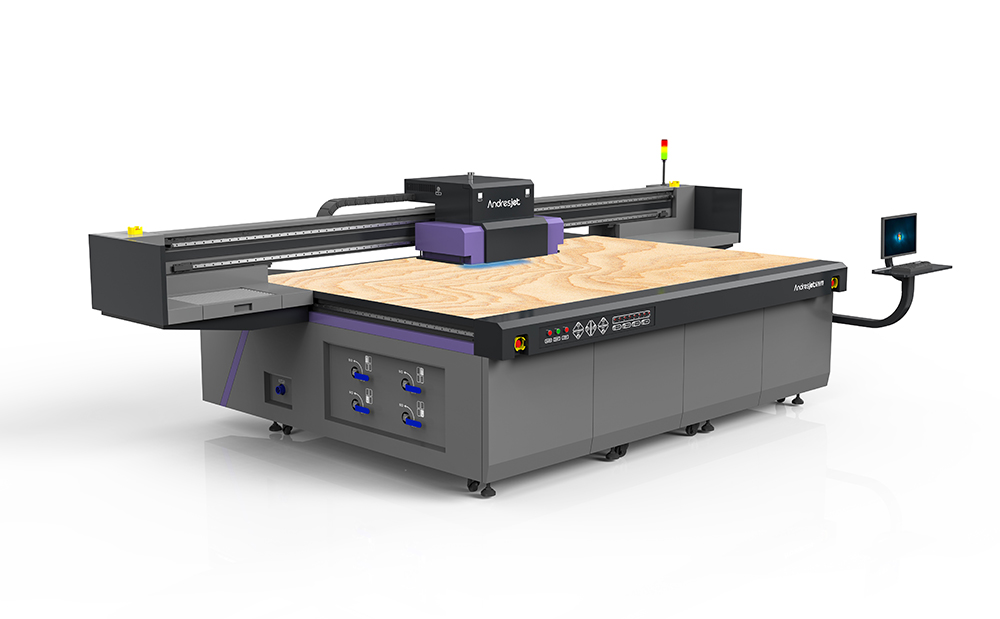Technical Aspects of Integration with Third-Party Software in UV Flatbed Printing
Technical Aspects of Integration with Third-Party Software in UV Flatbed Printing
UV flatbed printing has revolutionized the printing industry, offering unparalleled versatility and precision in producing high-quality prints on various materials. This technology utilizes ultraviolet (UV) light to instantly cure ink as it is applied to the substrate, enabling rapid printing and minimal downtime. To further enhance productivity and streamline workflows, integration with third-party software plays a pivotal role. This article delves into the technical aspects of integrating third-party software in UV flatbed printing, exploring the challenges, benefits, and key considerations.

1. Introduction to UV Flatbed Printing
UV flatbed printers are designed to print directly onto flat or slightly curved surfaces, making them ideal for applications such as signage, packaging prototypes, promotional materials, and even fine art reproductions. These printers use UV-curable inks that solidify immediately when exposed to UV light, allowing for instant drying and eliminating the need for additional drying or curing processes. This technology ensures precise ink deposition, vibrant colors, and durability against fading or scratching.
2. The Need for Third-Party Software Integration
While UV flatbed printers are capable of producing impressive results standalone, integrating them with third-party software can significantly enhance their capabilities. Such integration allows for automated workflows, advanced design capabilities, precise color management, and efficient production management. It enables seamless data transfer between design software, the printer, and other production tools, reducing manual input and potential errors.
3. Technical Challenges in Integration
Integrating third-party software with UV flatbed printers presents several technical challenges:
Compatibility Issues: Different printers and software may use proprietary file formats or communication protocols, leading to compatibility issues.
Data Transfer: Ensuring accurate and efficient data transfer between systems without loss of quality or resolution is crucial.
Driver and API Development: Developing or acquiring appropriate drivers and APIs (Application Programming Interfaces) that facilitate communication between the printer and software can be complex.
User Interface and Experience: Maintaining a user-friendly interface that simplifies complex tasks and provides real-time feedback is essential for efficient operation.
Security Concerns: Integrating external software introduces potential vulnerabilities in the system, necessitating robust security measures.
4. Key Technical Aspects of Integration
Successful integration of third-party software in UV flatbed printing involves addressing several key technical aspects:
File Format Compatibility: The software should support a wide range of file formats, including vector graphics and high-resolution raster images, to accommodate different design sources.
Color Management: Integration should include advanced color management tools to ensure accurate color reproduction, including ICC (International Color Consortium) profile support for color calibration.
Print Queue Management: Efficient print queue management is essential to optimize production, allowing users to prioritize jobs, monitor progress, and manage multiple print tasks simultaneously.
Automation and Workflow Tools: Integration should enable automation of repetitive tasks, such as file preparation, preflighting, and job scheduling, reducing manual intervention and potential errors.
Real-Time Monitoring and Feedback: Providing real-time monitoring of print jobs, ink levels, and printer status is crucial for maintaining productivity and minimizing downtime.
Scalability and Future Compatibility: The integration should be scalable to accommodate future software and hardware upgrades, ensuring long-term compatibility and minimizing the need for costly overhauls.
5. Benefits of Integration
The integration of third-party software in UV flatbed printing offers numerous benefits:
Increased Efficiency: Automated workflows and streamlined processes reduce production time and costs.
Enhanced Quality: Advanced color management and precise control over print parameters result in consistent, high-quality prints.
Improved Productivity: Real-time monitoring and efficient job management enable quick response to production demands.
Expanded Design Capabilities: Access to a broader range of design tools and features enhances creativity and versatility.
Better Resource Management: Integration allows for better allocation of resources, including ink and media usage, reducing waste.
6. Case Studies and Best Practices
Several successful integrations between UV flatbed printers and third-party software have demonstrated the potential of this collaboration. For instance, Adobe Illustrator and Photoshop integrations have enabled designers to seamlessly transfer their creations to the printer, maintaining design integrity and color accuracy. Similarly, print management software like Caldera or Wasatch SoftRIP has facilitated efficient job scheduling, color management, and print queue optimization.
Best practices in integration include:
Thoroughly testing the integration before full-scale implementation to identify and address potential issues.
Regularly updating software and drivers to ensure compatibility with the latest printer models and operating systems.
Providing comprehensive user training to ensure operators can effectively utilize the integrated features.
Establishing clear communication channels with software vendors for ongoing support and troubleshooting.
7. Conclusion
The integration of third-party software with UV flatbed printers presents a significant opportunity to enhance productivity, quality, and efficiency in the printing industry. While technical challenges exist, addressing these through careful planning, testing, and collaboration with software vendors can lead to successful implementations. As technology continues to advance, the potential for even more sophisticated integrations will further unlock the capabilities of UV flatbed printing, driving innovation and growth in the sector.
